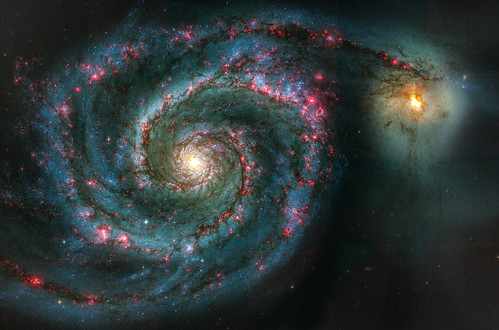 Originally posted by Robin
Originally posted by Robin 
Nothing coming yet, unless Santa has seen my wishlist, but I've been thinking on a Celestron Newtonian. The computerized star finder would be handy, but I was thinking of starting off with a manual model?
That really depends. You have a T-adapter so you're planning on trying to take photographs? I remember somewhere that newtonians focal point is inside the focusing tube, so that means your camera won't actually be able to come to infinity focus without significant modification to the main mirror of the telescope or using a barlow lens with t-thread so your t-adapter fits. The barlow lens may or may not work though, it depends on your camera and the telescope itself, you'd have to google the specific model you're thinking of to see if others are using their DSLR and how. This is why I decided to buy a refractor, and why it's very popular with DSLR astrophotographers. Some you just need the t-ring, but on mine I need to add a couple extension tubes to get the camera back far enough for infinity focus. Much easier and it's a guarantee that you get infinity focus.
If you don't have much to spend, I'd honestly buy a Dobsonian and if you find you like being up late at night, then start looking at getting something else. Dob's are easier to manoeuvre and find objects manually but they're big and not very portable.
If you really want to start taking pictures though, you need a few things: 1. the mount is the most important piece you can buy, and good mounts are expensive. However, if you really wanted to get into this, you could forgo the telescope and use your 150-450 lens on a Skywatcher Star Adventurer mount, the Astro package. I'm not sure how much you lens and camera weigh, but pretty sure the Star Adventurer can handle it. Conversely, you could buy a small refractor, like a William Optics Z61ED and use it on the Star Adventurer with your camera setup. the 61ED is a focal length of 360mm and that's without a field flattener, so you'd still have more reach with your 150-450. Any bigger than a 61ED (other than maybe a 63-64) then weight becomes an issue for the Star Adventurer. With any mount, you don't want to exceed more than 50% of the advertised weight limit when imaging; any more than that and tracking starts to have problems. This is why the mount is the most important piece, and it HAS to be a good quality Equatorial. And for more serious imaging than what the Sky Adventurer would offer, I'd not go any less than a mount that costs $1100-$1500. EQ 2-4 range mounts really don't offer much more than the Star Adventurer offers.
I would not even consider buying a traditional(computerized or not) Alt-Az mount for photography. You need to modify it too much to make it work for astrophotography with a Equatorial wedge and camera de-rotator to compensate for field rotation.
Short of it: do your research. A LOT of research, if you want to start into astrophotography. If not, a Dob is a good bet, but you'd get a lot of visual use from some of the prepackaged Alt-AZ computerized mount/telescope combinations: they're by far the easiest computerized rigs to setup and operate. EQ mounts, even the Star Adventurer, can be frustrating to learn how to use right out of the box. I know, because I struggled for 2 years to learn how to set my HEQ5 Pro mount up, and I still have issues every now and then.


 Similar Threads
Similar Threads 









 ! And maybe I must do some fiddling with the 150-450, with the 1.4x converter.
! And maybe I must do some fiddling with the 150-450, with the 1.4x converter.












 Post #1 by aitrus3
Post #1 by aitrus3








